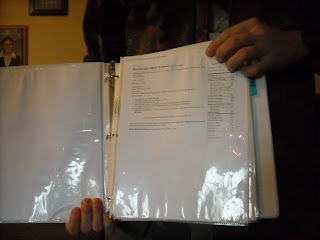Our gardening expert guided us through the first part of the procedures and gave us the rest of the guideline to follow. So... check this out. =D
1) This part is obvious. When you cull the pumpkin and pull out the guts, dump all of that in a large bowl or in our case, three to four medium bowls. Don't worry about separating the seeds at this point while you are culling. Just dump them all at once in the bowls after removal.
Messy pumpkin goop.
2) Set a clean strainer in the sink. Hold a handful of goop over the strainer and squeeze. The seeds pop off pumpkin pulps and into the strainer. Dump the remaining seedless goop in a separate empty bowl. Continue with more handfuls.
Men hard at work. The guy to the left with green shirt is teh gardening expert helping us out. :D
Shiny seeds!
Now we've put them in an empty 24-pack soda box with the lid ripped off for the time being. We plan to spread those out on a large dry piece of cardboard and put it in the basement. They have to be fully spread out in rows without overlaying each other in order to be dried for about over a week.
Then, after that, time to test for viability.
One good way is to take a small handful of the seeds and place them into a dampened envelope. Seal it and put that into a small ziploc bag. Seal that and place it somewhere warm, preferably on top of the fridge.
Another way is to use dampened newspaper. I'll need to check with our friend to be sure what the exact process with this one is.
Whichever the process; if it does not sprout within 2 to 3 weeks, it's not viable. It should show tiny little sprouts curling outward in order to be viable. If three testings in order prove these handful of seeds to be useless, then I might as well roast or bake them for yummy snacks!
The best time to plant these are after the last frost, so most likely sometime in May. Harvesting should be done before the first frost, perhaps around October. Oh yeah, and apparently it's a plain waste of time if you attempt any sort of controlling how the vines and how much they will spread around. Vines are weak, it can't be pruned or bent, or it will break and render useless the growth/ripening of the pumpkins. The whole patch will quite literally die. Dale warns us that it's best to use some precautions against rotting. You want to prevent the pumpkins from staying wet after the rain, so it should not remain upon wet ground. Actually, you want to have this precaution for ANY type of gourds. So, here are some good tips:
- A huge mound of shredded newspapers under each pumpkin throughout their growing and ripening process. You want a lot so that the wet part of the bottom pile doesn't soak through to the pumpkins.
- Another way is to use straw bale or hay under them. This is preferable because the rain and moisture slicks right off of those. Also, it really keeps the pumpkin dry and warm.
We'll be sure to add updates on our possible Pumpkin Patch. It's a bit early to tell for now.


















